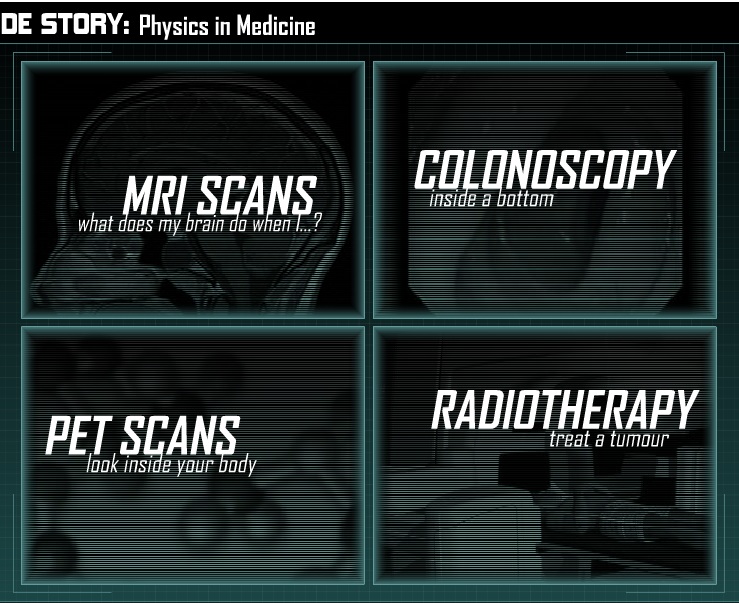Nuclear magnetic resonance (NMR) spectroscopy is perhaps the most useful technique in the organic chemist’s toolkit. But conventional NMR requires the sample to be placed in a very high magnetic field, which needs large and expensive superconducting magnets cooled by liquid helium. Now, an interdisciplinary group in the US has managed to accomplish NMR spectroscopy without magnets. The work could lead to portable NMR spectrometers, and possibly even small personalized spectrometers for medical diagnosis.
Today, My friend shared with me an awesome site related to Biomedical Imaging technique where you can learn the role of the physics in Medicine, That is the various Medical Imaging Modalities which are around us.
This site works in an interactive manner and you can understand the various modalities clinical application by few clicks . It will help in making the applications crystal clear in your mind
 You CAN LEARN
You CAN LEARN
- MRI scans
- Colonoscopy
- PET SCANS
- Radiotherapy
This will help you in developing a interest in the field of Medical Imaging.
This is a preview of Inside story: Physics in Medicine(Awesome Learning Website in Medical Imaging).
Read the full post (144 words, 2 images, estimated 35 secs reading time)

Targeted biopsy, a major advance in prostate cancer diagnostics, was detailed by a UCLA team in the current issue of Urologic Oncology. The new technology fuses MRI with real-time 3D ultrasound, providing an exacting method to obtain biopsy specimens from suspicious areas in the prostate.
The unique fusion method provides a major improvement in the way prostate biopsy is performed since the current biopsy methods were developed in the mid-1980s, according to UCLA professor of urology Dr. Leonard S. Marks, a study author.
This is a preview of MRI fused with Ultrasound for Guided Prostate Biopsy @ UCLA.
Read the full post (1007 words, 3 images, estimated 4:02 mins reading time)

Image via Wikipedia
In the past decade, the use of MRI scanners has skyrocketed. Because the machines are able to provide relatively detailed images of soft tissues, they are extremely valuable in diagnosing cancers, heart problems and even back pain. These machines use a powerful magnetic field, radio frequency pulses and a computer to produce pictures of internal body structures.
But MRIs have been off limits to patients with implanted heart pacemakers. That’s because the MRI’s magnetic field could wreak havoc on a pacemaker’s electronic circuitry. Or worse, some of the pacemaker’s metal components could heat up and literally cook parts of the heart.
This is a preview of Pacing your Heart inside MRI Machine using REVO to be costly.
Read the full post (565 words, 2 images, estimated 2:16 mins reading time)



